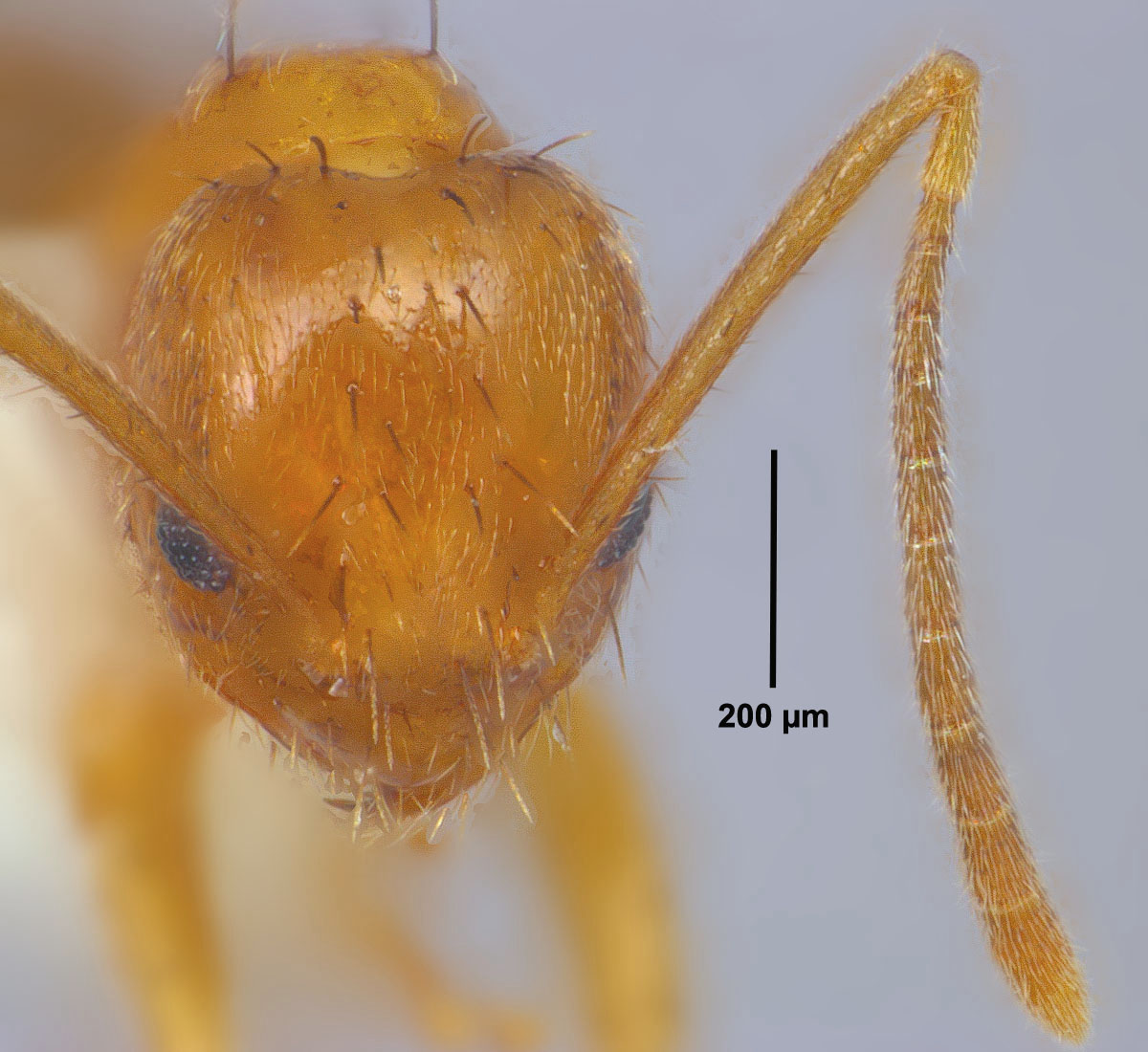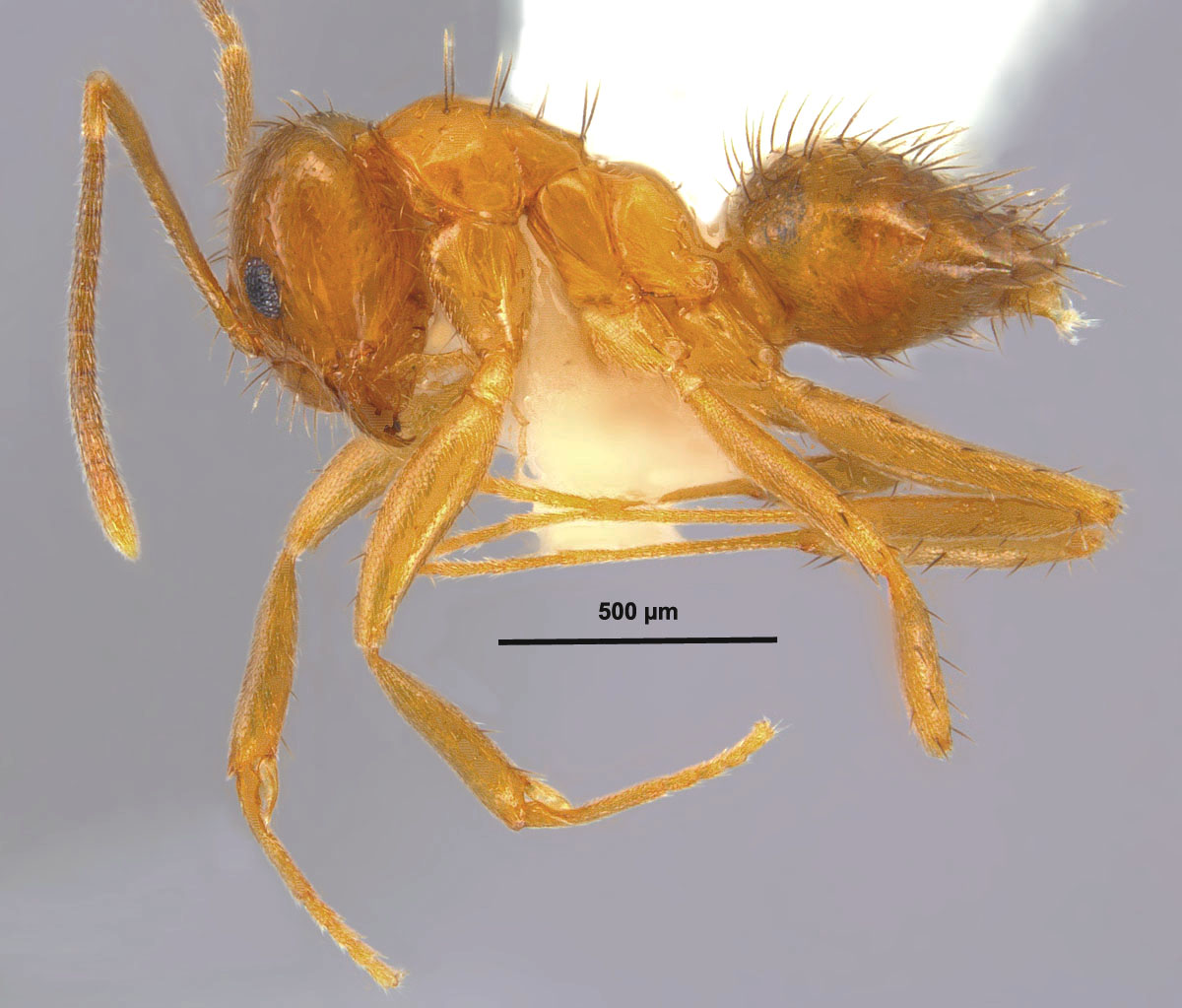Subfamily FORMICINAE Tribe LASIINI Nylanderia querna Kallal and LaPolla, 2012 |
|
Nylanderia querna, full face view of a worker from MS (click image to enlarge). |
Nylanderia querna, profile view of a worker from MS (click image to enlarge). |
Nylanderia querna, profile view of a dealate queen from MS(click image to enlarge). |
|
Introduction Trager (1984) revised the genus, then called Paratrechina, for the continental United States. LaPolla et al. (2010) elevated the subgenus Nylanderia to the generic level, which in effect, meant that all Nearctic Paratrechina species except for P. longicornis were now placed in Nylanderia. In 2012, Kallal and Lapolla (2012) revived the genus and provided an updated key for the Nearctic region. However, there are still some undescribed species in this group that which may be parasitic on other Nylanderia species. These species apparently do not have a worker caste, and the males are unusual in that they have characteristics of both males and workers. Nylanderia querna is a recently described yellow species found in hardwood forests in the central and southeastern US. Basically, workers look like very yellow N. faisonensis as they scurry about the forest floor during the day. Identification (from Kallal and LaPolla 2012) Female: 3.41 to 4.04 mm (TL). Bicolored, head and gaster brown and mesosoma, scapes, mandibles, and legs yellowish-brown. Entire body with dense pubescence that does not obscure the shiny cuticle. Male: 1.89-2.07 mm (TL). Bicolored, head and gaster dark brownish; mesosoma, scapes, mandibles, and legs brownish-yellow, and meso- and metacoxae sometimes pale yellow. Genitalia with triangular parameres, digiti slightly shorter than adeagal valves and not fingerlike, cuspides slightly less than half as long as digiti. This species is most similar to N. arenivaga. Workers of N. querna differ by being slightly smaller on average, having less abundant macrochaetae present on gaster, and being uniformly shiny yellow;whereas, N. arenivaga workers are typically larger, have more gastral macrochaetae, and with gaster brownish distally. However, it is easier to separate these two species using males. Males of N. querna are bicolored and have shortened digiti similar to N. faisonensis and N. parvula; whereas, N. arenivaga males are uniformly brown and have elongate, fingerlike digiti. These species can basically be separated by their habitat preferences as well as N. querna appears to prefer hardwood forests and have only been found nesting in acorns. Nylanderia arenivaga colonies are typically found in open sandy habitats and prairie remnants. In other words, if you find bright yellow Nylanderia that have scape macrochaetae foraging in large numbers in the woods in the Southeast or central US, chances are its this species. The only other yellow species that could/would be in the same habitat is N. trageri, which lacks scape macrochaetae. Nylanderia querna could be confused with N. terricola or N. vividula, but workers are not bicolored and cephalic pubescence is much denser in N. querna. Biology and Economic Importance Distribution ReferencesKallal, R. J. and J. S. LaPolla. 2012. Monograph of Nylanderia (Hymenoptera: Formicidae) of the World, Part II: Nylanderia in the Nearctic. Zootaxa 3508: 1-64. Lapolla, J. S., S. G. Brady, and S. O. Shattuck. 2010. Phylogeny and taxonomy of the Prenolepis genus-group of ants (Hymenoptera: Formicidae). Systematic Entomology 35: 118-131. Trager, J. C. 1984. A revision of the genus Paratrechina (Hymenoptera: Formicidae) of the continental United States. Sociobiology 9: 49-162. |
|





